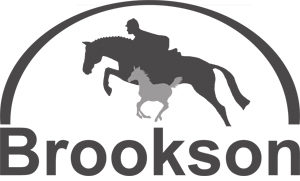It is true that high-quality horses can be expensive to buy, and all horses require significant ongoing expenses. When considering a premium lease or purchasing a horse, it’s important to understand the various costs involved. Here are some cost breakdowns to help clarify why the expenses can seem so high:
Basic Monthly costs to Feed and Care
Here is a breakdown of the basic minimum costs for keeping a horse. These costs do not reflect the value of the property, land taxes, insurance, or property maintenance, including barns and fences.
- .75-1.5 bales of hay per day $8.00 per day ($180-$360/month)
- Grain costs between $80-$300 per month
- Shavings at $6 per bag and using about 6 bags per week. ($100-$125)
- Staff for one horse at 1 hours per day to do turnout, health check, muck stall, pick paddocks, feed hay, fill water, feed grain, turn in etc (assuming no special care) ($900/month)
- Water $20/month
- Supplies (wheel barrows, forks, buckets etc0 ($50/month)
Boarding actual costs $1330-$1755per horse. Other annual costs to maintain a horse;
- Farrier every four to six weeks at $150 – $250 per time($1560-$3000/year)
- Dewormer every 3 months at $80 per year
- Dentistry once a year at $200 per year
- Annual basic core vaccinations $120-$250
- Anti-inflammatory meds $300-500/year
- Joint Injections (for older horses) $0-$1200/year
- Chiropractic adjustments $300-$1200/year
- +/- emergencies
Total $2560-$6430/ year for additional professional costs to keep your horse healthy.
On average any horse kept inside costs $1600 per month to care for. (Take away $200 if the horse lives outside).
_____________________________________________________________________________
The quality of the horse is another factor that affects the cost of leasing. Horse lease prices can range from a free lease, where you only pay for the monthly care costs, to mid-five figures per year. In Ottawa, the typical lease price for a horse suited to competing in the lower silver divisions (jumping up to 2’9 feet) is around 5-15k/year. For horses suited to compete at higher levels on the A circuit, the price range is generally around 15k-30k/year.
As the desired jumping height increases, so does the cost. For instance, if you want to jump at 1.20m, you would need a budget in the mid-five figures. In summary, the cost of leasing a horse is closely related to the quality of the horse and the level of competition it is suited for.
Jumping higher is not the only factor that affects the price. Horses and ponies that are easier to ride, have more miles in the ring and are proven winners are more expensive than horses that are less competitive or harder to ride. For horses leased within barn at Brookson, we offer a lower price than if we were to lease the same horse out to a rider who would bring it to another barn.
So why can’t riders just jump school horses higher if they are capable of doing it? Jumping school horses at higher heights is not be feasible for several reasons. Firstly, school horses have a higher workload than show horses, as they may have to teach multiple low jumping lessons in a week, which could put undue stress on their bodies if they were to jump higher. Therefore, to keep them fit and able to work, we limit them to jumping at lower heights.
Secondly, school horses have a specific skill set that allows them to teach beginners, which makes them hard to find and replace. They must be patient, well-trained, and able to tolerate the mistakes that beginners often make. Therefore, it may not be practical to use them for jumping at higher levels.
In summary, school horses have a crucial role to play in teaching beginners and have specific requirements placed upon them that may make it difficult for them to jump at higher heights.
Regrettably, horses come with a high price tag, which is beyond our control. While horseback riding can be affordable for recreational purposes, those who aspire to compete at advanced levels must bear in mind that the cost is commensurate with their ambitions. In other words, the greater your goals, the more expensive it will be.
